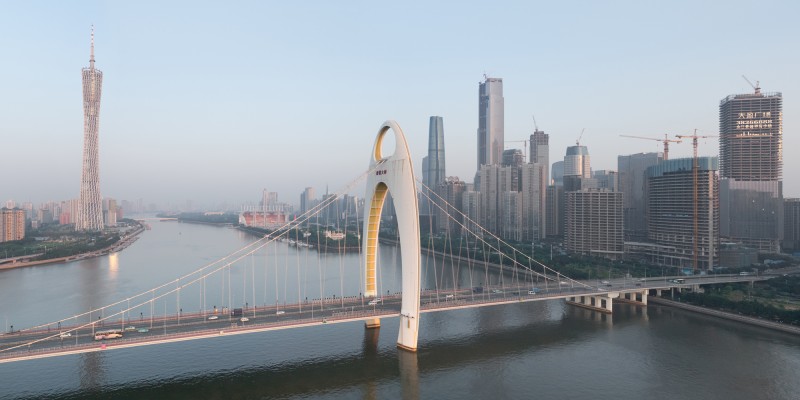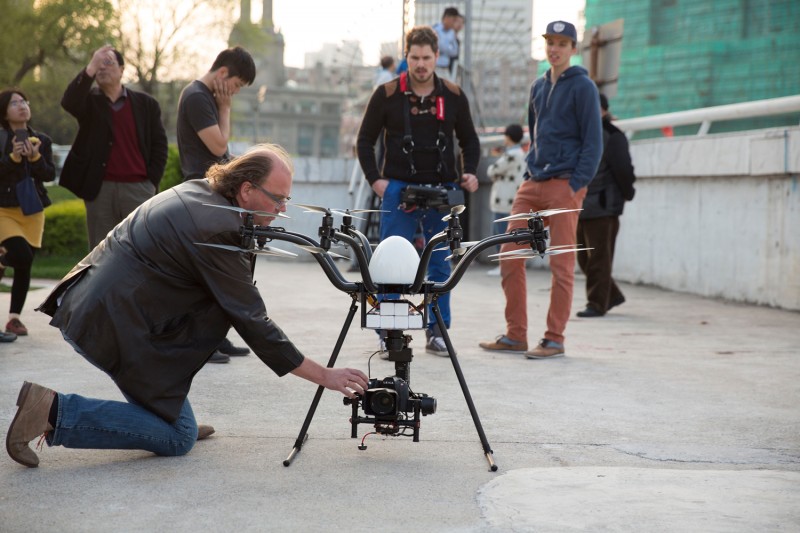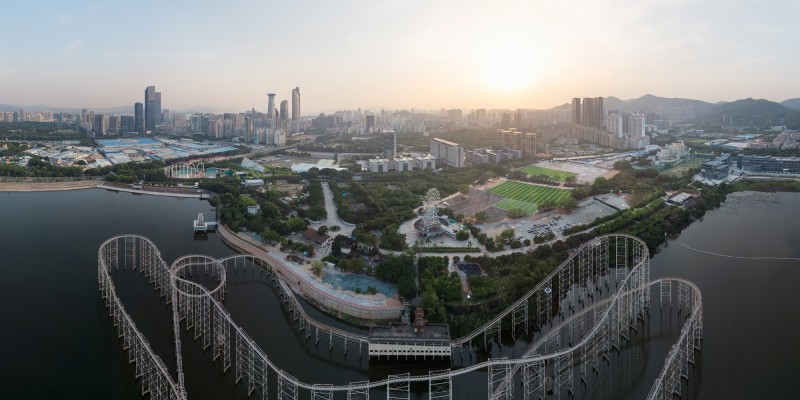China from the air
China from the air
HG Esch
June 16, 2015

An exhibition catalogue is now available in the LFI Shop.
Mr Esch, what made you decide to use a drone rather than a plane or a helicopter for this project?
I place a lot of value on the carefully-chosen excerpts of my pictures. Photos taken from a plane or a helicopter don't give me that kind of precision. With drone technology and a drone pilot who masters the technology, it's possible for me to photograph exact compositions from perspectives I could not otherwise achieve. In a range of 0-300 metres, I can frame an image excerpt down to the last centimetre, aiming at it by means of a display monitor connected to the camera. In this manner, the technology is subordinate to my photography and my approach, so I can use this technology in the most optimal manner.
What type of drone do you work with? How long does a flight last and how many pictures can you take during each flight?
We use a redundant precision drone that has 16 motors and that can have a maximum weight of 16.5 kilos in flight. With a Leica S and lens, flying time is around 8 to 12 minutes. Depending on the demands, I can take anything from 10 to 120 photos during each flight.
Who pilots the drone? How is the camera steered?
The drone is controlled by Jonathan Ulmer, an experienced drone pilot. For the Leica S Typ 006, we developed a special camera guiding system: the image transfer is done by means of a microscopic camera built into the viewfinder. The pictures are taken in real time during the flight, using control electronics.
With this drone technology and the Leica S, it's now possible, for example, to take panorama rotunda images from the air. I find this very attractive, because I can chose the position all by myself, and I don't have to simply hope for the best that a tall building I've selected will just happen to have the perspective that I've envisioned.
Do you mind the fact that you have to hand over the camera to take the pictures?
In this case it makes no difference to me. With the display monitor in my hand, I pass on the information about the motif and the composition directly to the pilot. With the help of the display monitor I can control the motif myself, and discuss it with the pilot. I consider the drone a tool that offers me new perspectives. The picture is the most important thing and, in the end, the drone and the pilot are my extended arm, including the finger that presses the release in the right moment.
The pilot and the photographer need to become a well-rehearsed team – which is the case of Jonathan Ulmer and myself!
A drone is not a tripod, however. How much of an element of chance do you have to take into consideration?
For me, the drone is an aerial tripod, which can maintain its exact position in up to 15m/s winds. Absolutely nothing is left to chance. If wind or even solar storms, which can influence and disturb navigation, make the work impossible, I stop the flight. Later, when conditions have improved, I can use the GPS to return to exactly the same position and go on photographing.
HG Esch+-
Hans-Georg Esch was born in Neuwied in 1964, and received a classic training in photography. He has been working as a free-lance architecture photographer for national and international architectural offices since 1989, and is considered one of the most renowned representatives of his field today. More



